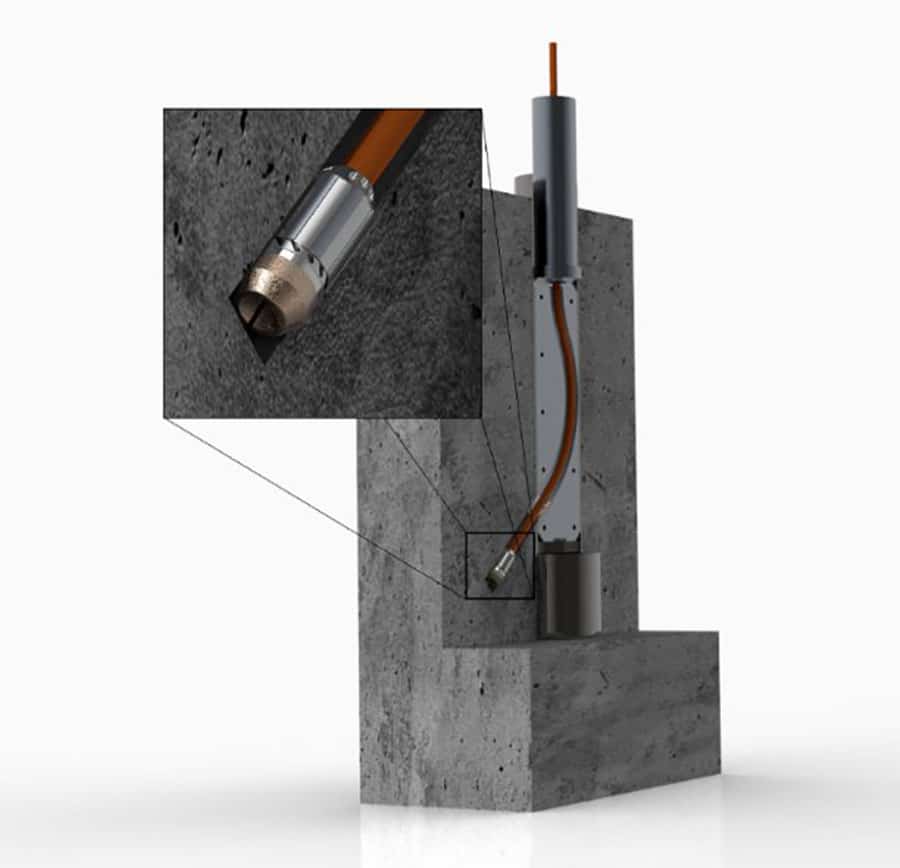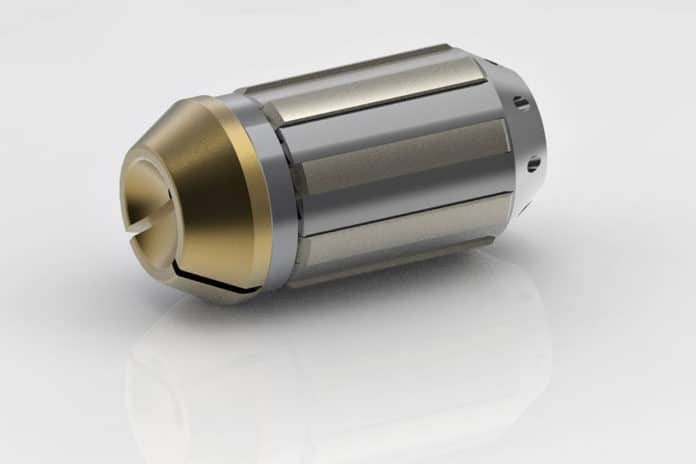Geothermal systems are becoming an increasingly important source of clean and baseload-capable energy. Hot water from reservoirs, fissures, and cracks can be found deep in the earth’s crust, which is about 30 kilometers thick. Even at a depth of 5000 meters, the water is up to 200 degrees Celsius, which can be used to power steam turbines to generate electricity or heat buildings via a heat pump system. However, drilling a geothermal well, which can be several thousand meters deep, is risky, and things can sometimes go wrong.
Fraunhofer scientists want to change this with an innovative tool that enables additional branches to be drilled off of the main well. This microturbine drilling (MTD) technology uses a mini-drill to perforate the area around the borehole in a radius of 50 meters and hydraulically connect the surrounding water-filled cracks and fractures to the borehole. Additional branches from the main well using MTD increase the catchment area for hot water, and the exploration risk significantly decreases.
The heart of MTD is a compact micro-drilling turbine that is equipped with a special drill bit. It is very small, measuring just 3.6 centimeters in diameter and 10 centimeters in length. The microturbine is attached to a high-pressure hose, through which it is powered by up to 200 liters of water per minute at an inlet pressure of about 100 bar, which makes the bit rotate.
The drill bit consists of a tungsten carbide matrix with incorporated diamond grains and grinds into the rock at up to 80,000 rotations per minute. As stated in the press release, it is particularly suitable for very hard, crystalline rock such as granite, but it is also able to pierce steel. That is important because wells are usually lined with steel casing for better stability. Without changing the drilling tool, the MTD can first drill the steel casing and then the rock in a single step.

“We can drill two to three meters in one hour. The water that powers the microturbine serves as both a coolant, so the drill doesn’t get too hot, and also flushes the hole to remove the drill cuttings,” says Niklas Geißler, who performs research at the Fraunhofer IEG in Bochum and the Fraunhofer-Chalmers Research Center for Industrial Mathematics FCC in Sweden.
One of the challenges in the process is to deflect the micro-drilling turbine out of the main well and drive it into the surrounding rock at a relatively large working angle. Researchers have also developed a special deflection device for this purpose. With this so-called deflection shoe, the compact tool can be guided out of the main well at an angle of about 45 degrees, and new cracks and fissures can be opened up with hot water around the main well. Using the hydraulic pressure means that when the water is pumped up, the water flows out of the cracks and fissures and into the main well.
The team has already successfully demonstrated the technology in a proof of concept, and next, they are planning to record the drilling noises. By analyzing the audio recordings, it is possible to determine whether the drill is rotating at the right speed, is stuck, or is even running dry.
“In general, the MTD can be used in any deep drilling where it is important to explore the surrounding area of a well with potentially heterogeneous rock types, such as for the oil and gas industry. In the geotechnology or tunnel construction fields, for example, this micro-drilling technology can be used to drill anchor holes in hard-to-reach areas where the amount of available space precludes the usage of conventional equipment,” explains Geißler.
